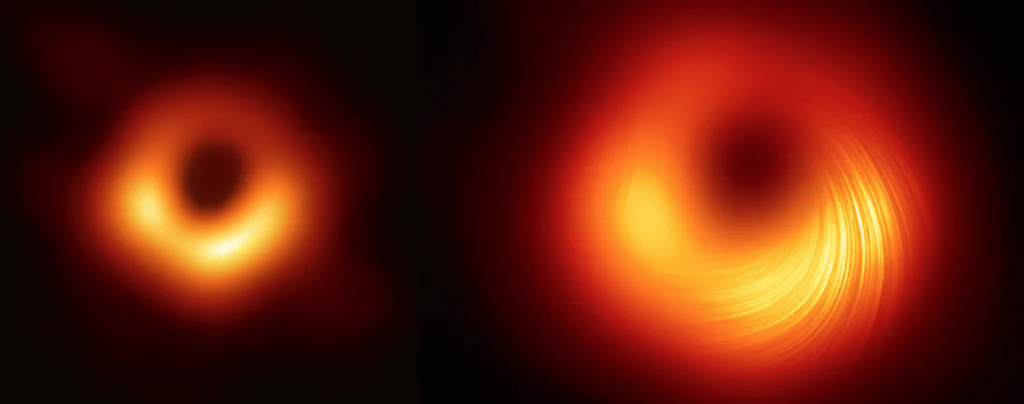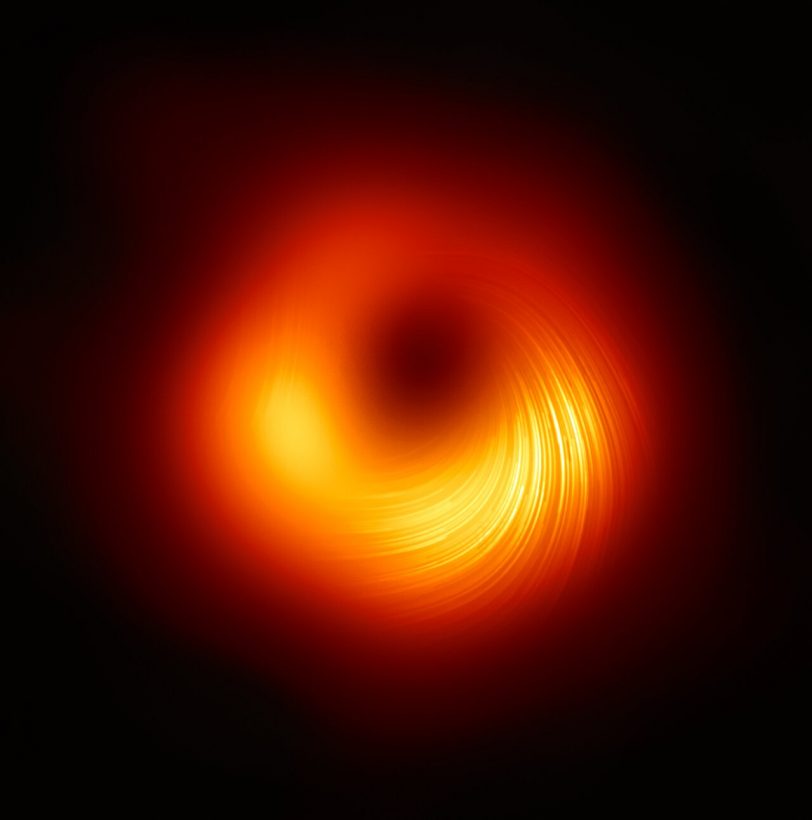The Event Horizon Telescope (EHT) collaboration, which produced the first-ever image of a black hole, revealed a new view of the massive object at the center of the M87 galaxy: a picture of its polarized light. This is the first time astronomers have been able to measure polarization, a signature of magnetic fields, this close to the edge of a black hole. The observations are key to explaining how the M87 galaxy, located 55 million light-years away, is able to launch energetic jets from its core.
But what exactly is polarization, and why does it matter?
Well, light is weird. It’s made up of electric and magnetic fields, vibrating in all sorts of directions. Polarized light is only vibrating in one direction. Most light is non-polarized when it leaves a star or the huge, bright disc of gas and debris around a black hole, but its interactions with dust and magnetic fields can cause it to polarize. Detecting polarization then provides a signature of the environment around a black hole like M87*.
“We are now seeing the next crucial piece of evidence to understand how magnetic fields behave around black holes and how activity in this very compact region of space can drive powerful jets that extend far beyond the galaxy,” says Monika Mościbrodzka, assistant professor at Radboud Universiteit in the Netherlands. Mościbrodzka is co-coordinator of the EHT Polarimetry Working Group with Ivan Martí-Vidal of the University of Valencia in Spain.
The results were published on March 24 in two separate papers in the Astrophysical Journal Letters by the EHT collaboration.
On April 10, 2019, scientists released the first-ever image of a black hole, revealing a bright ring-like structure with a dark central region: the black hole’s shadow. Since then, the EHT collaboration has delved deeper into the data on the supermassive object at the heart of the M87 galaxy and has discovered that a significant fraction of the light around the M87 black hole is polarized.

“The observations suggest that the magnetic fields at the black hole’s edge are strong enough to push back on the hot gas and help it resist gravity’s pull,” according to Jason Dexter, an astrophysicist at the University of Colorado Boulder and coordinator of the EHT Theory Working group. “Only the gas that slips through the field can spiral inwards to the event horizon.”
The magnetic fields closest to the black hole may be so extreme that they’re blasting matter away from the edge and focusing it into the huge jet observed emanating from Messier 87.

The Event Horizon Telescope is not a single telescope, but a series of eight Earth-based telescopes located across the globe. It’s a “virtual telescope,” as big as the Earth, that captures the light escaping from around M87*, providing the kind of resolution required to resolve these features, even though it lies millions of light-years away.
No products found.



Only polarized light can escape the event horizon of the black hole?